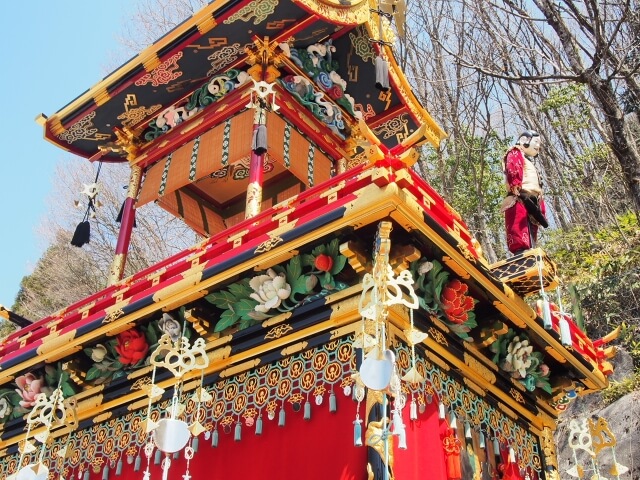-
- USA/Canada 1-800-285-2726
- Australia (02) 8006 4411
Featured Experience on our Takayama Festival Japan Tours.
Even though the Takayama Festival's origins remain unknown, it is said that they were first celebrated between 1586 and 1692 when the Kanamori family governed the Hida Takayama area. Unlike most Japanese Matsuri's (festivals), the Takayama Festival is celebrated twice a year, once in the Spring and once in the Fall. While the festival is celebrated twice a year, it is still considered one of the most beautiful festivals in all Japan. The spring festival is associated with the Hie Shrine while the autumn festival is associated with the Sakurayama Hachimangu Shrine. Both are much alike and feature a parade of large floats (yatai) decorated with thick curtains, lacquer ware, and mechanical dolls (karakuri). Twelve floats appear in the spring festival and eleven during the autumn.

Although both festivals are very similar, the procession carrying the portable shrine (mikoshi) is unique to the autumn Takayama Festival. Both festivals attract large crowds of travelers each year, though the spring festival is believed to be more crowded as it coincides with the popular Cherry Blossom Season. While the crisp autumn leaves are a sight to behold, nothing beats the stunning wonder of cherry blossom flowers dancing in the skies as lavish floats cover the streets of Takayama.
Experience the most beautiful festival in Japan firsthand during any of our fully-escorted Takayama Festival Japan Tours available in the Spring & Autumn. Enjoy this experience of a lifetime in the hidden village of Little Kyoto.
Takayama Festival-One of the Most Beautiful Festivals in Japan
Rural Hot Spring and Traditional Town Takayama
Japan's Traditional Festivals - Takayama Festival, Gion Festival
Beautifully Preserved with Old Homes in Takayama
Find local fresh vegetables, fruits, mountain vegetables of Takayama
UNESCO World Heritage Gassho-zukuri farmhouses
Japanese confectionery made from kuzu starch and red bean paste
The Nagase House is one of many famous houses in the Shirakawago village